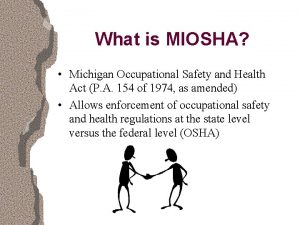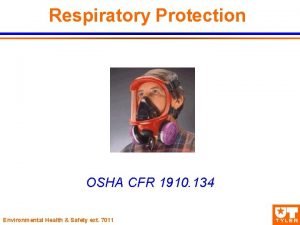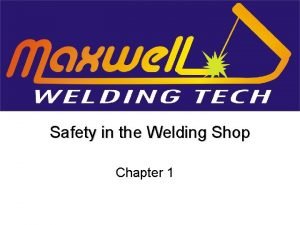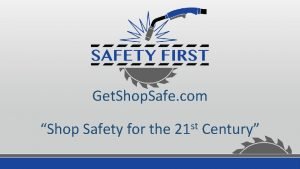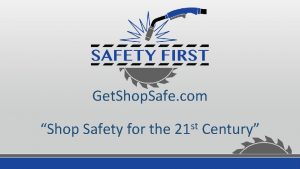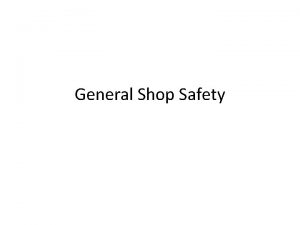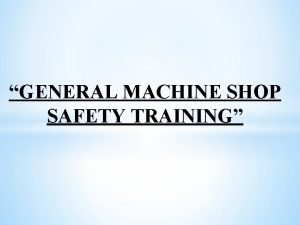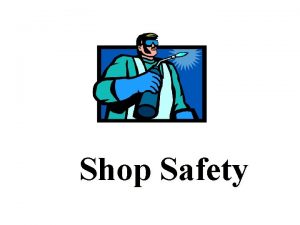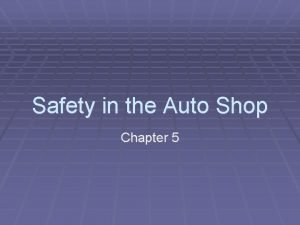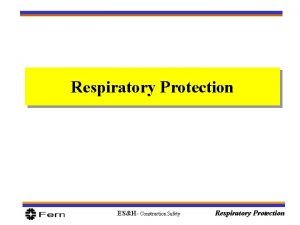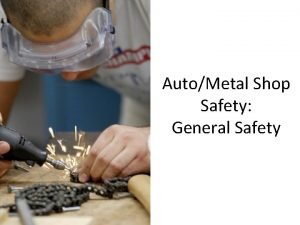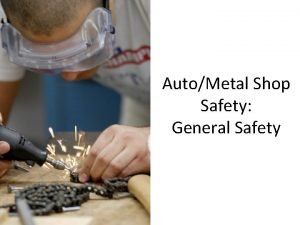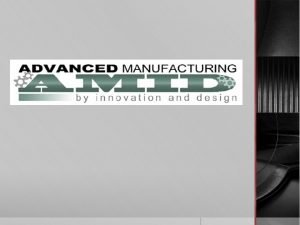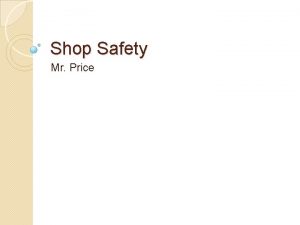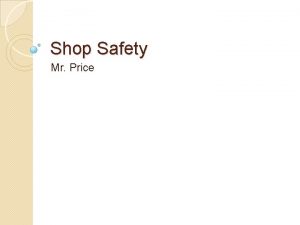OFFICE OF RESEARCH SAFETY Respiratory Protection Program Shop












- Slides: 12

OFFICE OF RESEARCH SAFETY Respiratory Protection Program Shop Safety Improvements 3 D Printing w/ powders Jeff Anthony Industrial Hygienist jantho 3@clemson. edu www. clemson. edu/research/safety

Respiratory Protection Program Step 1: Respirator Selection and Used Form If Research Safety determines that your job function will require respiratory protection, you must be enrolled in the Clemson University Medical Surveillance Program. Step 2: Medical Surveillance Form Fax: (864)656 -1123 Regular mail: Medical Surveillance Program, Joseph F. Sullivan Center, 101 Edwards Hall, Clemson University, Attention: Angela Reid. Note that it may take up to ten(10) business days. Step 3: Respirator Training Step 4: Fit Testing: Jeff Anthony at jantho 3@clemson. edu to schedule an appointment.

Respiratory Protection Program If your job does not require use of a respirator but you want to use a dust mask for comfort reasons, please complete the below form and send to Jeff Anthony at jantho 3@clemson. edu Appendix D – Voluntary Dust Mask Use Form IAW: OSHA 1910. 134. The program includes medical surveillance, training, and fit-testing. N-95 ■ Dust masks or particle masks ■ Half masks, with cartridges ■ Full facepieces with cartridges; ■ Loose-fitting hoods or helmets that cover the head completely ■ Atmosphere-supplying: Airline Respirators or Self Contained Breathing Apparatus.

Deep Orange Lab


P & A



3 D Printing w/ Powder NFPA 652, 654 and 484 (specifically for metallic dusts) https: //www. ncbi. nlm. nih. gov/pmc/articles/PMC 5553103/

Chemical Hazards with 3 D printers • Particulate – – • Chemical – – – • FDM using PLA Ultrafine particles FDM using ABS Ultrafine higher than PLA SLA lower than FDM printing Powder, smoke, soot FDM ABS chemical styrene, acrylonitrile DLA – resins, Methyl methacrylate Coatings –FDM nylon Rinsing and Finishing – – Alcohols Acetone Sodium Hydroxide – caustic bath Soldering – particulate emissions

Physical Hazards with 3 D printers • Hot Surfaces: (print head; freshly printed plastic, heated bed)—fire or burn hazard. Machines labeled. • Moving parts: pinch point or entanglement hazard. Labeled points and no loose clothing, hair tied back – Machines labeled • Sharp objects: scalpels, knives, screwdrivers, hand tools, Metal spatulas work best • Heavy objects: bone fractures/breaks, lacerations, bruising, back injuries • Electricity: shock or fire hazard (combustible dust environment) • UV/Laser radiation: eye and skin burns • Noise Levels >85 d. B: Equipment vibration/ mechanical noise, vacuum operation • Pneumatic equipment / inert gas supply: low oxygen level environment, compressed air into skin may cause an embolism Follow Manufacturers instructions No DIY printers or printers without heat sensors. Maintain equipment properly. Label hazards

PPE Positive Pressure Mask & Fan/Filter Unit To be used when powder can become airborne Tyvek Coat To be worn when working with powder Latex Gloves Ear Plugs To be worn when working with powder To be worn during high noise levels Steel Toe Shoes To be worn at all times


